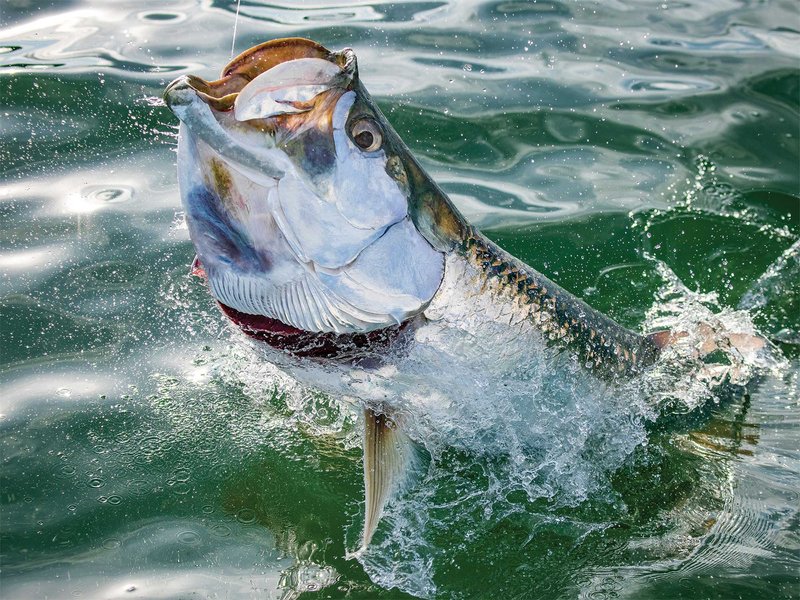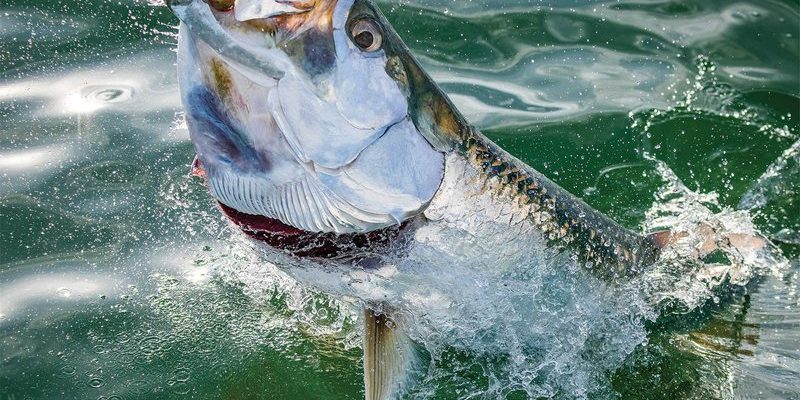
Have you ever stood on the shore, gazing out at the ocean, and wondered about the incredible creatures swimming beneath the surface? One of the most fascinating fish you might encounter is the tarpon. Known as the “silver king,” this fish is famous for its impressive size, acrobatic leaps, and shiny, reflective scales that glint in the sunlight. Imagine casting your line into the water, feeling that tug, and suddenly witnessing a massive fish launch itself into the air in a spectacular display. That’s what tarpon fishing is all about!
But there’s so much more to the tarpon than just its striking appearance. These fish are not only essential parts of their ecosystems but they also hold a special place in the hearts of anglers and marine enthusiasts alike. Whether you’re fascinated by their biology, eager to learn about their habitats, or just curious about what makes them thrive, we’ll dive deep into everything you need to know about tarpon.
What Is a Tarpon?
The tarpon, scientifically known as Megalops atlanticus, is a large fish found in warm coastal waters throughout the world. Primarily, you’ll spot them in the Atlantic Ocean and along the coasts of North America, the Caribbean, and parts of South America. Picture them gliding gracefully through the water, often in schools, especially during their spawning season.
These fish can grow remarkably large, with some individuals reaching lengths of over 8 feet and weighing as much as 280 pounds! Their streamlined bodies are built for speed, allowing them to dart away from predators and catch their prey. And speaking of prey, tarpon primarily feed on smaller fish, crustaceans, and other marine organisms, making them skilled hunters in their watery domain.
Key Characteristics of Tarpon
| Characteristic | Details |
|---|---|
| Size | Up to 8 feet long and 280 pounds |
| Habitat | Warm coastal waters and estuaries |
| Diet | Small fish, crustaceans, and various marine organisms |
| Lifespan | Up to 50 years in the wild |
| Speed | Capable of swimming at speeds up to 30 mph |
| Reproduction | Spawning in deep water, typically during full moons |
Habitat and Distribution
Tarpon are mainly found in the warm, shallow waters of the Atlantic Ocean, but they prefer areas near the shore, such as bays, estuaries, and mangrove swamps. These environments provide not only abundant food sources but also places to hide from larger predators. You might find them swimming alongside boats or near sandy bottoms, where they can hunt for smaller fish or simply bask in the sun.
Interestingly, during the spawning season, which typically occurs in the summer months, tarpon migrate to deeper waters. This migration is usually timed with the lunar cycles, especially around full moons, suggesting that these fish have a keen sense of timing when it comes to reproduction. After spawning, juvenile tarpons often return to shallower waters, where they can grow and develop in safety.
Behavior and Social Structure
Tarpon are fascinating creatures, not just for their physical traits but also for their behavior. These fish are known to be quite social, often found swimming in schools, particularly during feeding times. This group behavior can enhance their hunting success and provide protection from larger predators.
When hunting, tarpon display impressive agility and speed. They are capable of quick bursts that allow them to ambush their prey, darting through the water like a torpedo. If you ever see a school of tarpon making a ruckus on the water’s surface, it’s likely they’re feeding on baitfish. It’s a spectacular sight to witness, and it definitely gets the adrenaline pumping for any angler nearby.
Why Are Tarpon Popular Among Anglers?
For fishing enthusiasts, tarpon are often considered the ultimate challenge. Their size and strength make them incredibly exciting to catch, and their acrobatic leaps out of the water can leave both seasoned and novice anglers in awe. When hooked, a tarpon can put up a fierce fight, often jumping several feet into the air in an attempt to escape—this is where the thrill lies!
Sport fishing for tarpon has grown in popularity over the years, particularly in places like Florida and the Caribbean. Many anglers visit these regions specifically for the chance to catch one of these magnificent fish. In many cases, it’s less about the meat (as tarpon are often released) and more about the sheer experience of battling such a powerful creature.
Conservation Status
Despite their popularity, tarpon face numerous threats. Overfishing, habitat destruction, and climate change have all impacted their populations. Although tarpon are not currently listed as endangered, responsible fishing practices are crucial in ensuring their survival for future generations. Many fisheries promote catch-and-release practices, helping to maintain healthy populations of these incredible fish.
Organizations dedicated to marine conservation are working tirelessly to protect the habitats where tarpon thrive. Efforts to restore coastal ecosystems and enforce sustainable fishing regulations are vital. By supporting these initiatives, we can help safeguard the “silver king” and its environment.
Frequently Asked Questions
What do tarpon eat?
Tarpon primarily feed on smaller fish, such as mullet and menhaden, as well as crustaceans and other marine organisms. Their diet can vary depending on the availability of food in their habitat, and they are known to be opportunistic feeders, meaning they will eat whatever is readily accessible.
How do tarpon reproduce?
Tarpon reproduce by spawning in deep waters, typically around full moons. During this time, females can release millions of eggs, which are fertilized by males in the surrounding water. Once the eggs hatch, the larvae drift with ocean currents before eventually settling into shallower waters as juvenile fish.
Are tarpon good to eat?
While some people do eat tarpon, they are not particularly popular on the dinner plate. The fish has a somewhat tough texture and can have a strong flavor. Many anglers prefer to release them back into the water after catching them, focusing instead on the sport of fishing rather than consumption.
How long do tarpon live?
Tarpon can live quite a long time, with lifespans of up to 50 years in the wild. Their longevity can be attributed to their adaptability and the relatively stable environments they inhabit. This extended lifespan also contributes to their significant role in marine ecosystems.
What is the best time to catch tarpon?
The best time to catch tarpon generally depends on the region, but many anglers find the summer months to be particularly productive. This is often when tarpon migrate to shallow waters and spawn, making them more likely to be seen and caught by fishing enthusiasts.
Do tarpon have any predators?
Tarpon face threats from larger predators like sharks and barracudas, especially when they’re young. While adult tarpon are formidable, their size and speed help them evade most threats. However, human activities like fishing are their most significant danger.
Can tarpon be kept in aquariums?
Keeping tarpon in aquariums is not practical due to their large size and swimming needs. They require significant space and specific water conditions, making them more suitable for natural habitats. Instead, they are best appreciated in the wild, where they can thrive in their natural environment.
Where can I find tarpon?
You can find tarpon in warm coastal waters worldwide, including the Atlantic Ocean, the Gulf of Mexico, and parts of the Caribbean. Popular fishing spots include Florida, the Bahamas, and various locations along the coasts of Central and South America.
How fast can tarpon swim?
Tarpon are incredibly fast swimmers and can reach speeds of up to 30 miles per hour. This speed, combined with their agility, makes them formidable predators and a thrilling challenge for anglers trying to catch them.
What makes tarpon unique?
What truly sets tarpon apart is not only their size and strength but also their remarkable aerial acrobatics. When hooked, they often jump out of the water several feet high, displaying an impressive show that captivates onlookers. This combination of beauty and brawn makes them a favorite among sport fishers.

